A Novel Forked-Finger Electrode-Structured Thermoelectric Module with High Output Power
Abstract
:1. Introduction
2. Simulation Approach
2.1. Theoretical Equations
2.2. Material Parameters
2.3. Boundary Conditions
- The thermophysical parameters of all material are presumed to be isotropic and independent of temperature.
- The FFTEM model’s side boundary is considered adiabatic.
- The initial temperature of the FFTEM model is equal to the ambient temperature.
- The thermoelectric elements are connected in parallel both electrically and thermally.
- It does not take into account the extremely weak Thomson effect.
- The heat transfer is only along the height direction of the electrocouple leg; the surrounding sides are adiabatic.
- The surface temperature of the ceramic substrate at the hot and cold ends is constant at , .
- The magnitude of the load resistance is always the same as the magnitude of the internal resistance in order to facilitate the iterative solving process of the finite-difference method.
- The thermal conductivity of the ceramic substrate is a constant value.
- The cross-sectional areas of the n-type and p-type electrocouple legs are equal: .
2.4. Geometric Model
3. Results and Discussions
3.1. Effect of the Electrode Size
3.2. Temperature Distribution and Output Characteristics of the FFTEM
3.3. Comparison of the FFTEM Module and the TEM Module
3.4. The Effect of Thermal Contact Resistance
3.5. Transient Output Characteristics
4. Conclusions
Supplementary Materials
Author Contributions
Funding
Informed Consent Statement
Data Availability Statement
Conflicts of Interest
References
- King, D. Global Clean Energy in 2017. Science 2017, 355, 111. [Google Scholar] [CrossRef] [PubMed] [Green Version]
- Sorrell, S. Reducing energy demand: A review of issues, challenges and approaches. Renew. Sustain. Energy Rev. 2015, 47, 74–82. [Google Scholar] [CrossRef] [Green Version]
- Vasylieva, T.; Lyulyov, O.; Bilan, Y.; Streimikiene, D. Sustainable economic development and greenhouse gas emissions: The dynamic impact of renewable energy consumption, GDP, and corruption. Energies 2019, 12, 3289. [Google Scholar] [CrossRef] [Green Version]
- Cole, T. Thermoelectric energy conversion with solid electrolytes. Science 1983, 221, 915–920. [Google Scholar] [CrossRef] [PubMed]
- Tan, G.; Zhao, L.D.; Kanatzidis, M.G. Rationally Designing High-Performance Bulk Thermoelectric Materials. Chem. Rev. 2016, 116, 12123–12149. [Google Scholar] [CrossRef] [PubMed]
- He, J.; Tritt, T.M. Advances in thermoelectric materials research: Looking back and moving forward. Science 2017, 357, eaak9997. [Google Scholar] [CrossRef] [Green Version]
- Junior, O.A.; Maran, A.; Henao, N. A review of the development and applications of thermoelectric microgenerators for energy harvesting. Renew. Sustain. Energy Rev. 2018, 91, 376–393. [Google Scholar] [CrossRef]
- Flipse, J.; Dejene, F.; Wagenaar, D.; Bauer, G.; Youssef, J.B.; Van Wees, B. Observation of the spin Peltier effect for magnetic insulators. Phys. Rev. Lett. 2014, 113, 027601. [Google Scholar] [CrossRef] [Green Version]
- Jouhara, H.; Żabnieńska-Góra, A.; Khordehgah, N.; Doraghi, Q.; Ahmad, L.; Norman, L.; Axcell, B.; Wrobel, L.; Dai, S. Thermoelectric generator (TEG) technologies and applications. Int. J. Thermofluids 2021, 9, 100063. [Google Scholar] [CrossRef]
- Champier, D. Thermoelectric generators: A review of applications. Energy Convers. Manag. 2017, 140, 167–181. [Google Scholar] [CrossRef]
- Bitschi, A. Modelling of Thermoelectric Devices for Electric Power Generation. Ph.D. Thesis, ETH Zurich, Zürich, Switzerland, 2009. [Google Scholar]
- Fabián-Mijangos, A.; Min, G.; Alvarez-Quintana, J. Enhanced performance thermoelectric module having asymmetrical legs. Energy Convers. Manag. 2017, 148, 1372–1381. [Google Scholar] [CrossRef]
- Crane, D.; Bell, L. Progress towards maximizing the performance of a thermoelectric power generator. In Proceedings of the 2006 25th International Conference on Thermoelectrics, Vienna, Austria, 6–10 August 2006; pp. 11–16. [Google Scholar]
- Lv, S.; Qian, Z.; Hu, D.; Li, X.; He, W. A comprehensive review of strategies and approaches for enhancing the performance of thermoelectric module. Energies 2020, 13, 3142. [Google Scholar] [CrossRef]
- Neska, M.; Mrozek, M.; Żurek-Mortka, M.; Majcher, A. Analysis of the Parameters of the Two-Sections Hot Side Heat Exchanger of the Module with Thermoelectric Generators. Energies 2021, 14, 5169. [Google Scholar] [CrossRef]
- Dongxu, J.; Zhongbao, W.; Pou, J.; Mazzoni, S.; Rajoo, S.; Romagnoli, A. Geometry optimization of thermoelectric modules: Simulation and experimental study. Energy Convers. Manag. 2019, 195, 236–243. [Google Scholar] [CrossRef]
- Luo, D.; Wang, R.; Yu, W.; Zhou, W. Parametric study of a thermoelectric module used for both power generation and cooling. Renew. Energy 2020, 154, 542–552. [Google Scholar] [CrossRef]
- Li, Y.; Zhang, Z.; Zhang, H.; Xiao, Z.; Luming, L.; Jiang, P. Numerical and experimental performance evaluation of a laser-concentrated photovoltaic-thermoelectric generator hybrid system. Opt. Express 2022, 30, 19465–19478. [Google Scholar] [CrossRef]
- Lamba, R.; Kaushik, S. Thermodynamic analysis of thermoelectric generator including influence of Thomson effect and leg geometry configuration. Energy Convers. Manag. 2017, 144, 388–398. [Google Scholar] [CrossRef]
- Hodes, M. Optimal pellet geometries for thermoelectric power generation. IEEE Trans. Compon. Packag. Technol. 2010, 33, 307–318. [Google Scholar] [CrossRef]
- Karana, D.R.; Sahoo, R.R. Influence of geometric parameter on the performance of a new asymmetrical and segmented thermoelectric generator. Energy 2019, 179, 90–99. [Google Scholar] [CrossRef]
- Blandino, J.R.; Lawrence, D.J. Transient response of a thermoelectric generator subjected to spatially non-uniform heating: Implications for heat and IR sensing applications. Measurement 2016, 80, 125–137. [Google Scholar] [CrossRef]
- Crane, D.; LaGrandeur, J.; Jovovic, V.; Ranalli, M.; Adldinger, M.; Poliquin, E.; Dean, J.; Kossakovski, D.; Mazar, B.; Maranville, C. TEG on-vehicle performance and model validation and what it means for further TEG development. J. Electron. Mater. 2013, 42, 1582–1591. [Google Scholar] [CrossRef]
- Chen, W.H.; Lin, Y.X.; Chiou, Y.B.; Lin, Y.L.; Wang, X.D. A computational fluid dynamics (CFD) approach of thermoelectric generator (TEG) for power generation. Appl. Therm. Eng. 2020, 173, 115203. [Google Scholar] [CrossRef]
- Wang, X.; Wang, H.; Su, W.; Wang, T.; Madre, M.A.; Zhai, J.; Chen, T.; Sotelo, A.; Wang, C. A novel multilayer composite structured thermoelectric module with high output power. J. Mater. Chem. A 2020, 8, 3379–3389. [Google Scholar] [CrossRef]
- Kirkham, H.; Johnston, A. Optically powered data link for power system applications. IEEE Trans. Power Deliv. 1989, 4, 1997–2004. [Google Scholar] [CrossRef]
- Matsuura, M.; Minamoto, Y. Optically Powered and Controlled Beam Steering System for Radio-Over-Fiber Networks. J. Light. Technol. 2017, 35, 979–988. [Google Scholar] [CrossRef]
- Matsuura, M.; Nomoto, H.; Mamiya, H.; Higuchi, T.; Masson, D.; Fafard, S. Over 40-W Electric Power and Optical Data Transmission Using an Optical Fiber. IEEE Trans. Power Electron. 2021, 36, 4532–4539. [Google Scholar] [CrossRef]
- Crump, P.; Erbert, G.; Wenzel, H.; Frevert, C.; Schultz, C.M.; Hasler, K.H.; Staske, R.; Sumpf, B.; Maaßdorf, A.; Bugge, F.; et al. Efficient High-Power Laser Diodes. IEEE J. Sel. Top. Quantum Electron. 2013, 19, 1501211. [Google Scholar] [CrossRef]
- Yan, J.; Liao, X.; Yan, D.; Chen, Y. Review of micro thermoelectric generator. J. Microelectromech. Syst. 2018, 27, 1–18. [Google Scholar] [CrossRef]
- Ouyang, Z.; Li, D. Modelling of segmented high-performance thermoelectric generators with effects of thermal radiation, electrical and thermal contact resistances. Sci. Rep. 2016, 6, 24123. [Google Scholar] [CrossRef]
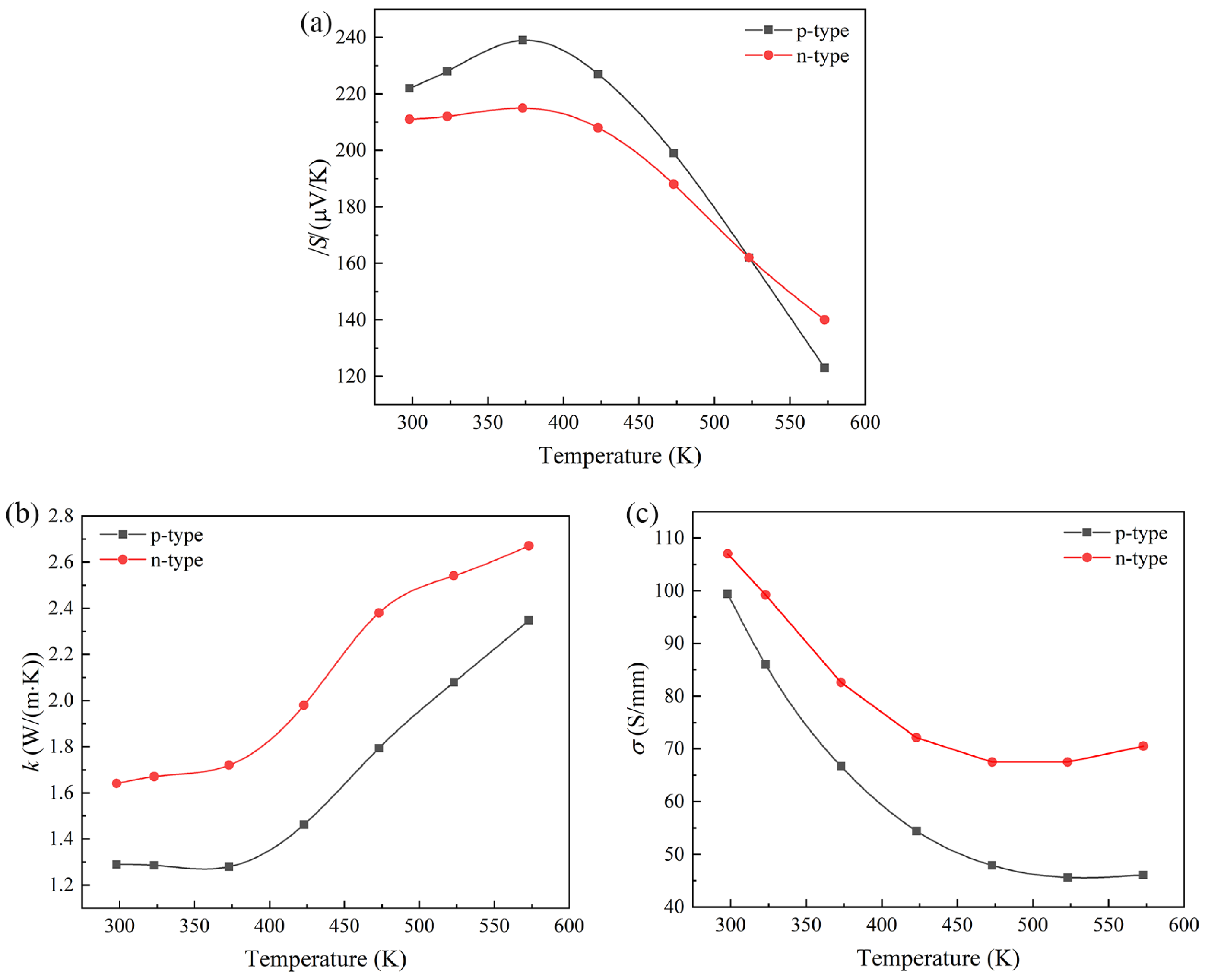

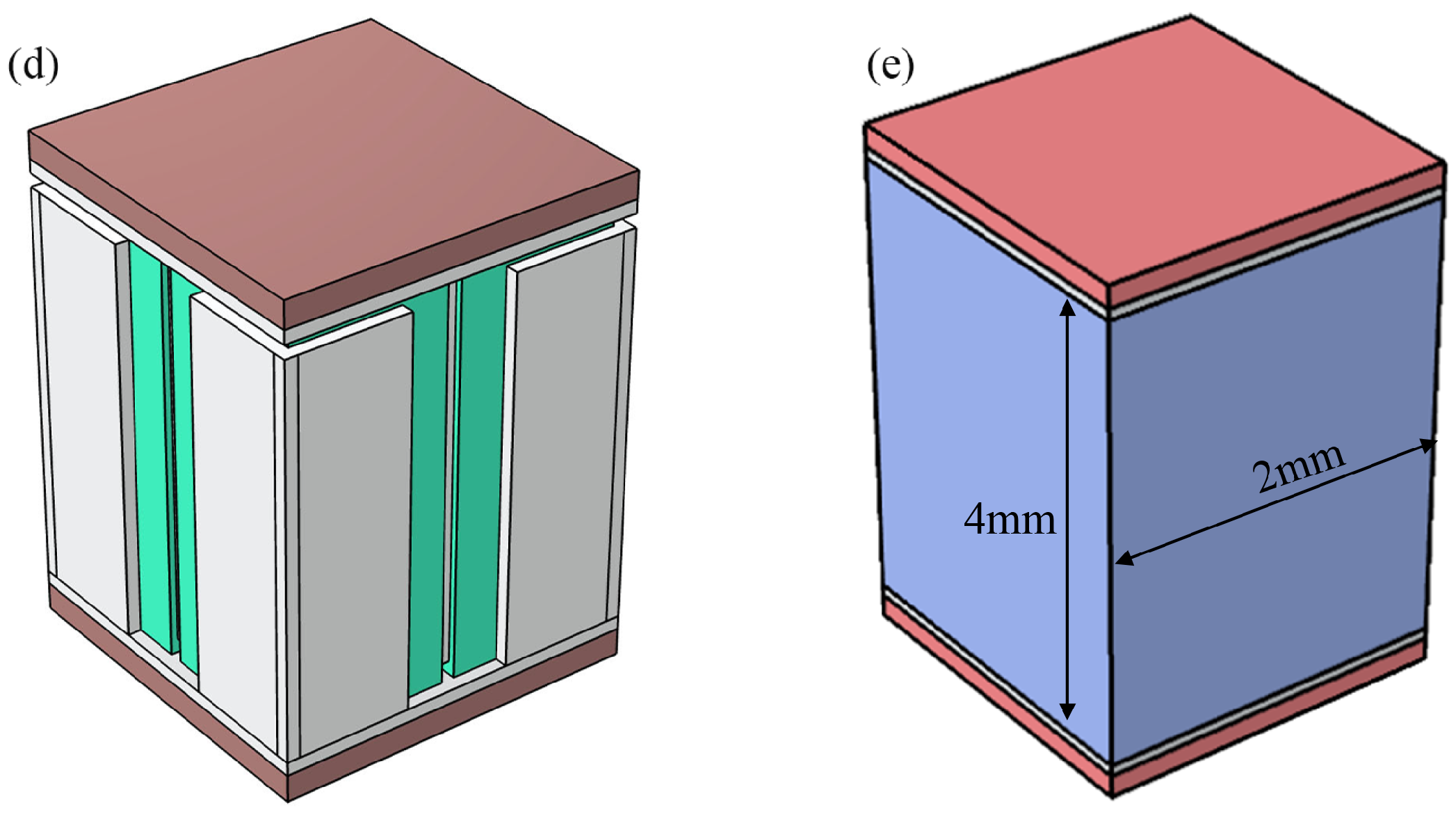
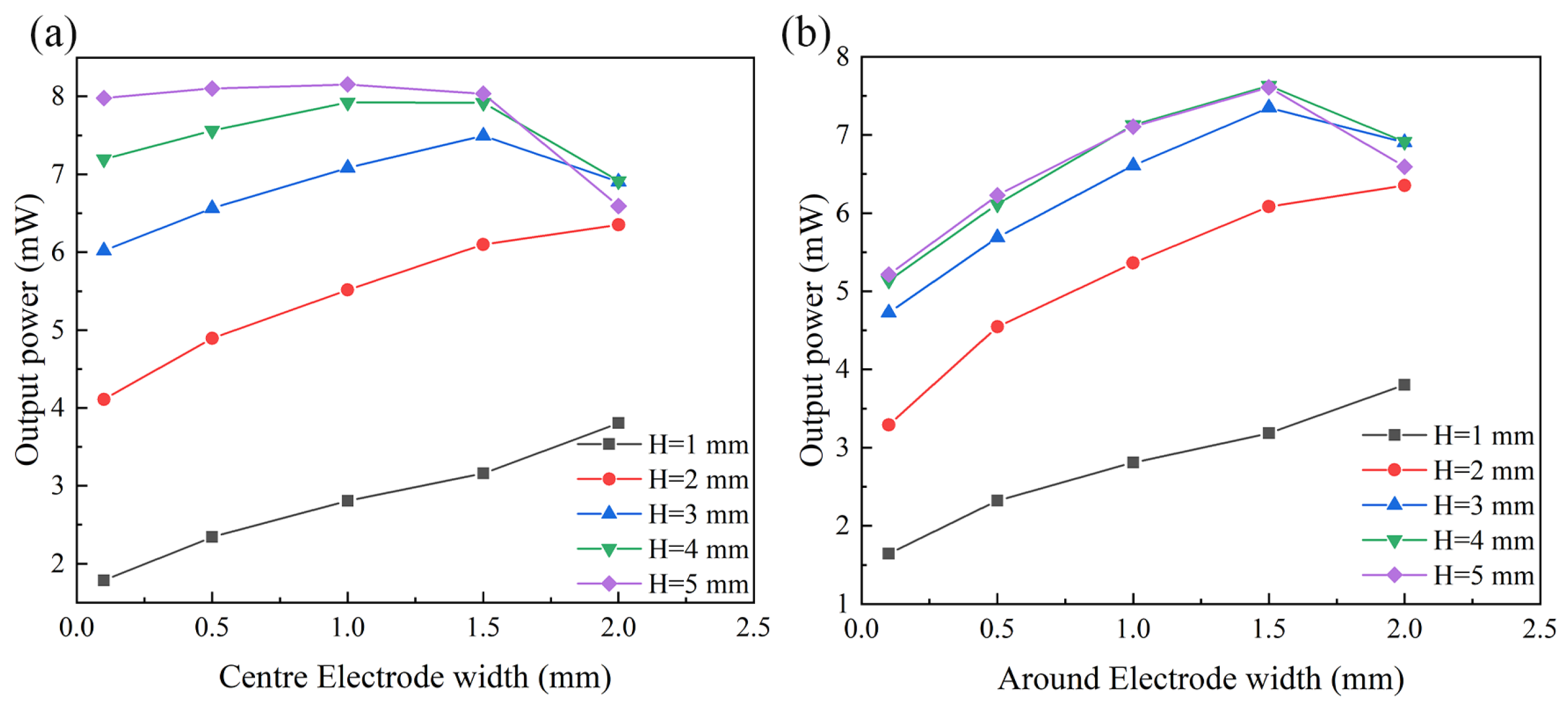
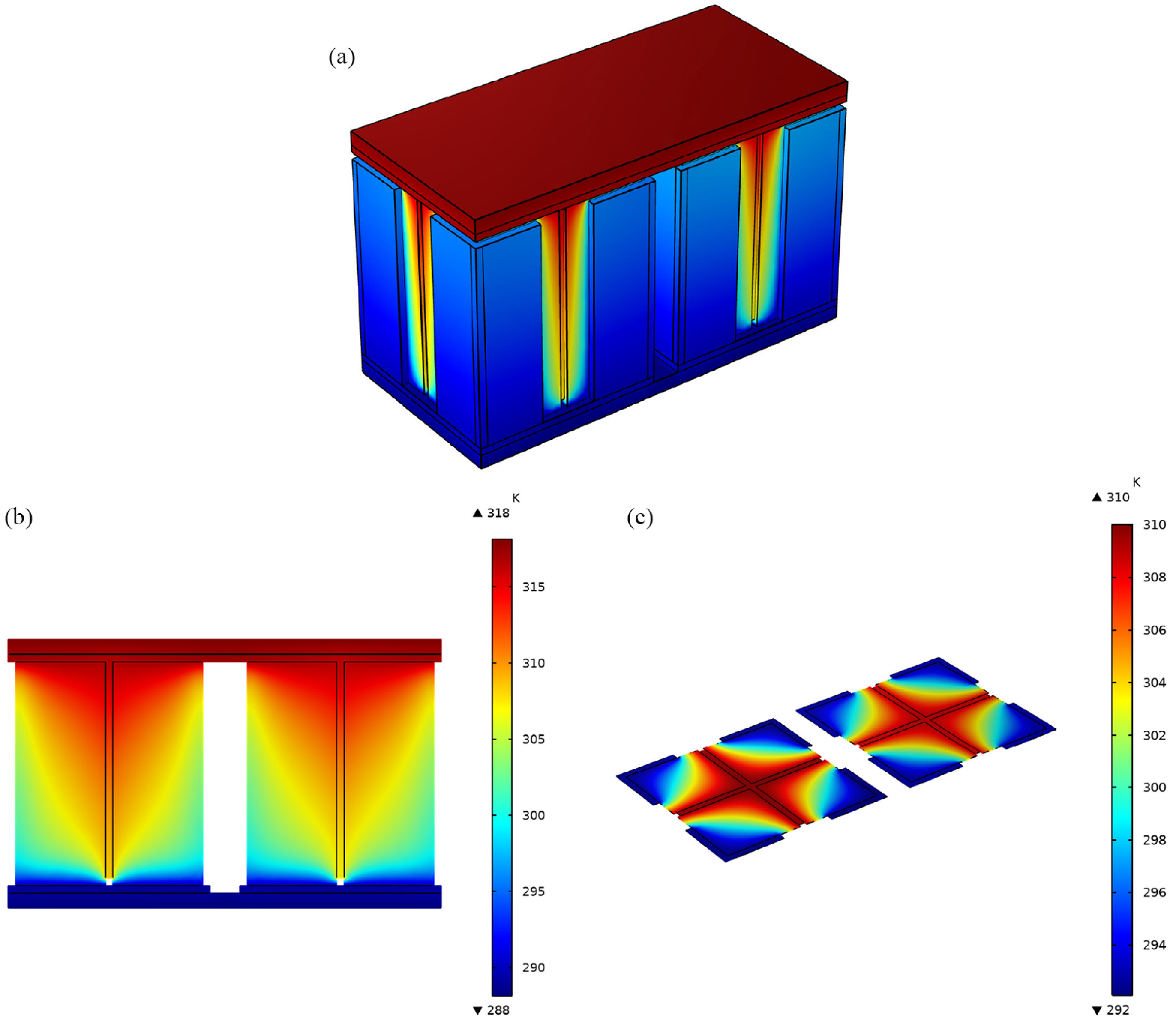

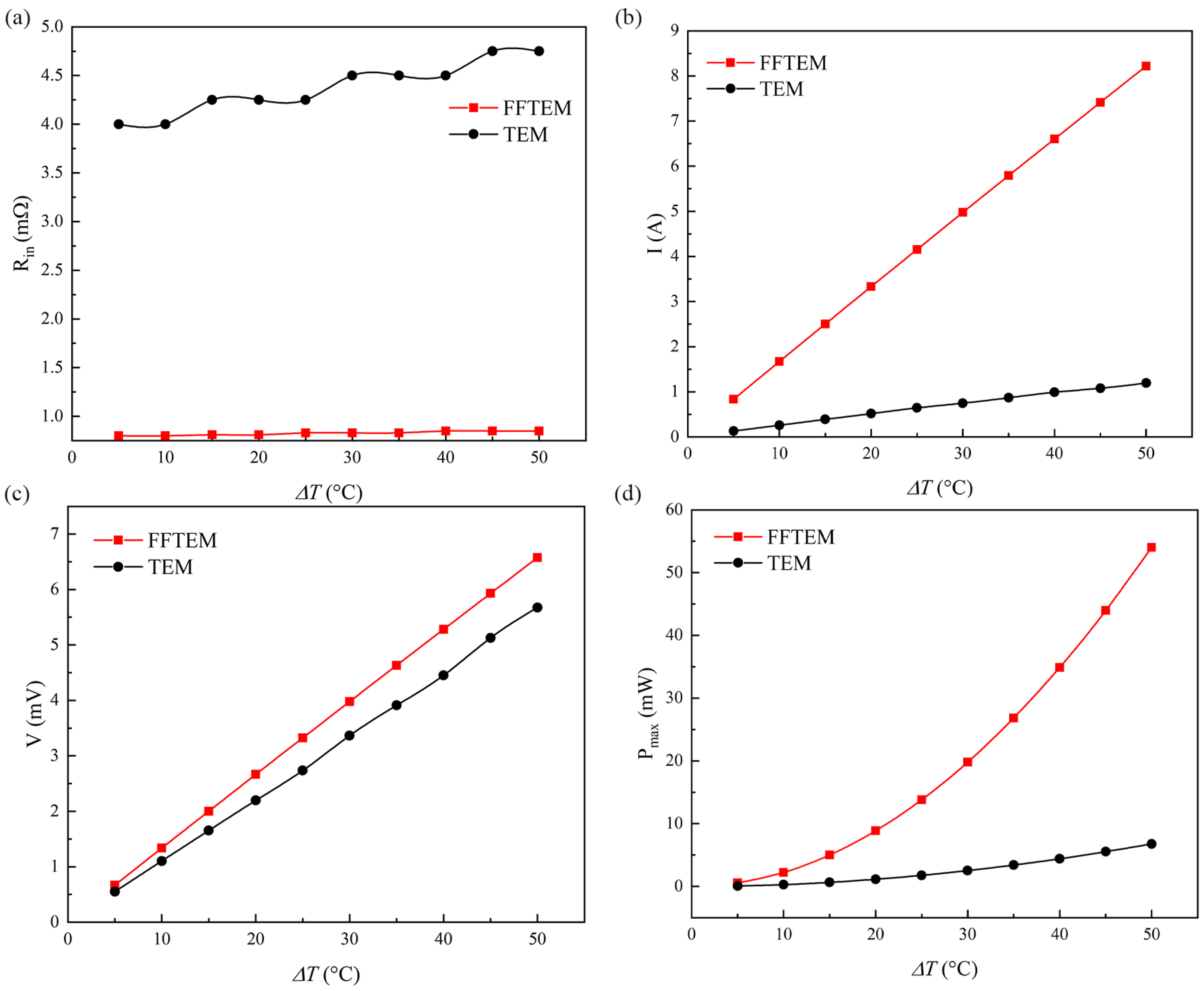

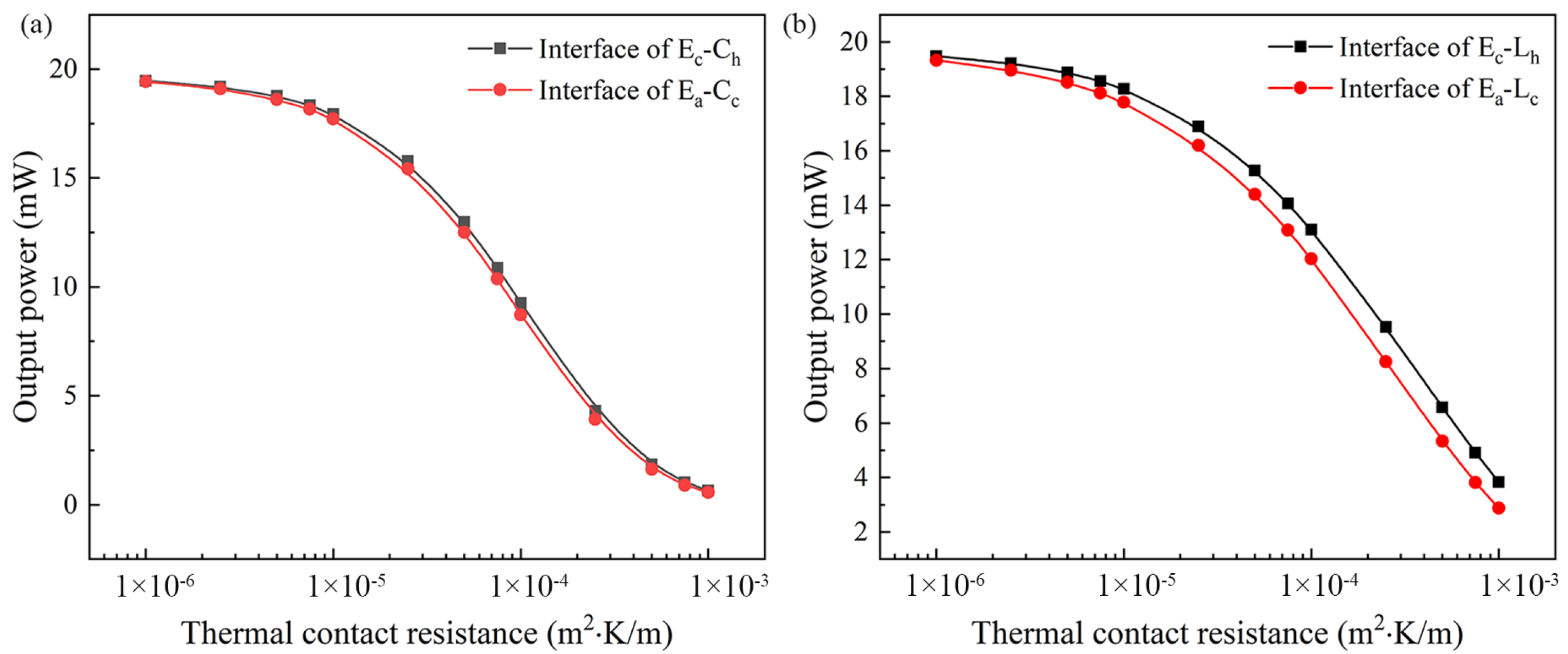
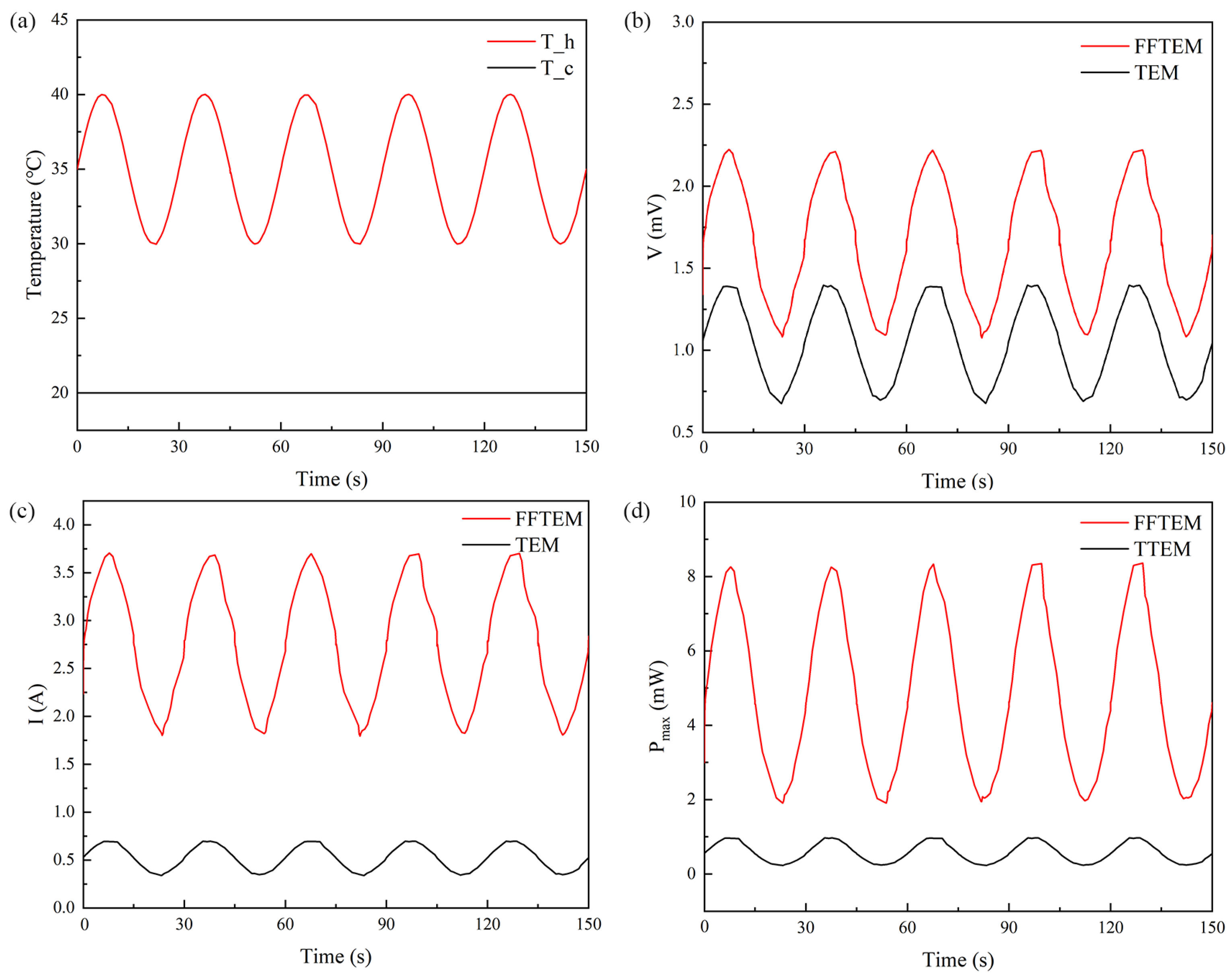

Publisher’s Note: MDPI stays neutral with regard to jurisdictional claims in published maps and institutional affiliations. |
© 2022 by the authors. Licensee MDPI, Basel, Switzerland. This article is an open access article distributed under the terms and conditions of the Creative Commons Attribution (CC BY) license (https://creativecommons.org/licenses/by/4.0/).
Share and Cite
Li, Y.; Zhang, Z.; Zhang, H.; Gu, X.; Chang, S. A Novel Forked-Finger Electrode-Structured Thermoelectric Module with High Output Power. Energies 2022, 15, 4430. https://doi.org/10.3390/en15124430
Li Y, Zhang Z, Zhang H, Gu X, Chang S. A Novel Forked-Finger Electrode-Structured Thermoelectric Module with High Output Power. Energies. 2022; 15(12):4430. https://doi.org/10.3390/en15124430
Chicago/Turabian StyleLi, Yuemei, Zhiguo Zhang, Haojie Zhang, Xueliang Gu, and Shaolong Chang. 2022. "A Novel Forked-Finger Electrode-Structured Thermoelectric Module with High Output Power" Energies 15, no. 12: 4430. https://doi.org/10.3390/en15124430
APA StyleLi, Y., Zhang, Z., Zhang, H., Gu, X., & Chang, S. (2022). A Novel Forked-Finger Electrode-Structured Thermoelectric Module with High Output Power. Energies, 15(12), 4430. https://doi.org/10.3390/en15124430





